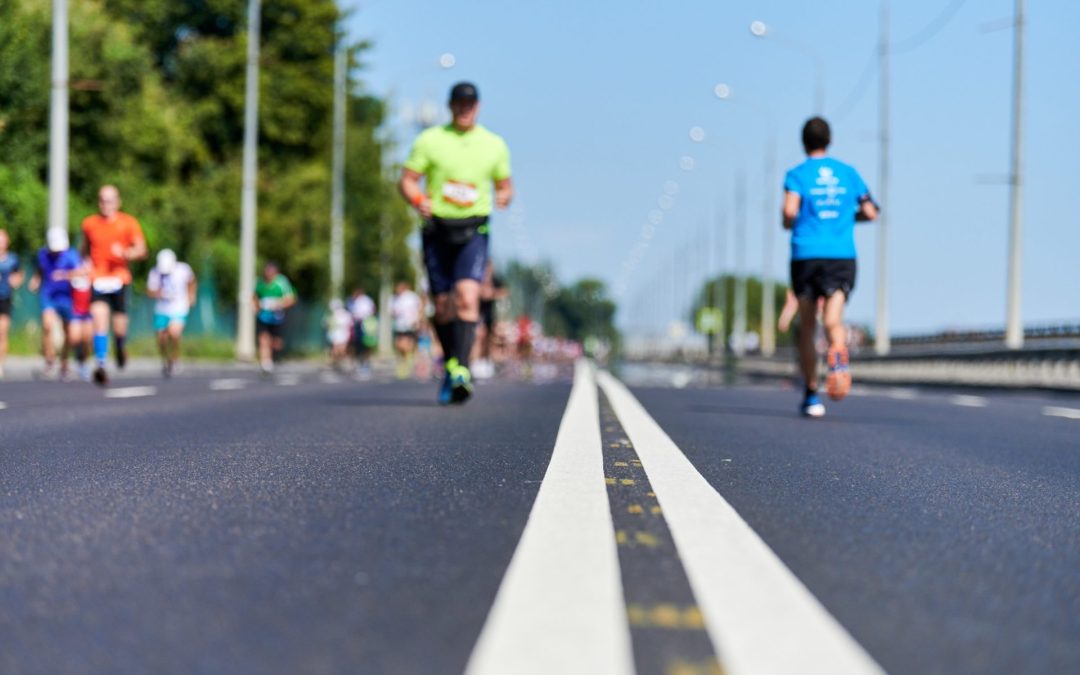As children, we all learned how to run with a sense of carefree abandon. It was a joyous experience as we chased our friends across fields, over hills, and through valleys. However, as we grow older, we tend to lose that ability to run effortlessly and it becomes challenging. Many of us start to develop bad running habits that can lead to all sorts of issues.
One of the most common problems that arise from an improper running form is posterior shin splints, which is a painful condition that can put a damper on even the most dedicated runner’s enthusiasm.
Imagine a world where you can run without fear of pain, where every stride feels effortless and each step is filled with joy. It’s not a pipe dream; it’s possible with the right knowledge and precautions.
In this article, we will delve into the causes of and solutions for posterior shin splints, so you can learn how to run like a pro and avoid this issue altogether. From the proper footwear to training exercises and everything in between, we’ve got you covered.
So lace up your shoes, and get ready to rediscover the joy of running, free from the shackles of pain and discomfort.
What are Posterior Shin Splints
Posterior shin splints are a common overuse injury that affects runners and athletes. It is characterized by pain and inflammation in the muscles and tendons along the inside of the shin bone (tibia). Unlike anterior shin splints, which affect the front of the shin, posterior shin splints occur along the inside edge of the tibia and effect mainly the tibialis posterior muscle.
This type of injury is often caused by repetitive stress or overuse, which can lead to inflammation and micro-tears in the muscles and tendons.
It’s commonly seen in runners who increase their mileage or intensity too quickly, or who run on hard or uneven surfaces. It can also be caused by overpronation, which is when the foot rolls inward excessively during the foot strike.
Symptoms
Symptoms of posterior shin splints include pain and tenderness along the inside of the shin bone, particularly after running or other physical activity. The pain may be dull and achy, or sharp and stabbing. In some cases, swelling and redness may also be present.
If left untreated, posterior shin splints can worsen and become a chronic condition. It’s important to seek treatment if you suspect you have posterior shin splints. Rest, ice, and anti-inflammatory medications can help alleviate symptoms.
It’s also important to address any underlying causes, such as overpronation, and to modify your running routine to prevent further injury.
In the next section, we will discuss how proper running form can help prevent posterior shin splints and other running-related injuries.
How To Run Without Getting Shin Splints: Proper Form
Running with improper form can increase your risk of developing this painful condition. Fortunately, focusing on a proper running form can help prevent shin splints and other running-related injuries.
Below we’ll explore some of the most important pieces to focus on when it comes to correcting your running form.
Foot Strike
One of the key components of how to run properly that can help prevent posterior shin splints is your foot strike.
Foot strike is the term used to describe the moment when the foot makes contact with the ground during walking, running, or any other activity that involves foot movement. Foot strike is typically classified as either forefoot, midfoot, or heel strike, depending on which part of the foot makes initial contact with the ground.
Landing with your heel first can put excessive stress on your lower legs, leading to injury.
Instead, focus on landing on the midfoot or forefoot, which can help absorb shock and distribute the impact more evenly throughout your foot and leg. This can help prevent the repetitive stress that can lead to posterior shin splints.
Posture
In addition to foot strike, posture is another important factor in preventing posterior shin splints. Maintaining good posture throughout your run can help distribute the impact of each step and reduce the strain on your lower legs.
Keep your head up, shoulders relaxed, and core engaged. Your arms should be bent at a 90-degree angle, swinging naturally at your sides, and not crossing over your body. Your hands should be relaxed and your fingers should be lightly curled as if you’re holding an egg.
Focus on staying upright, not letting your back hunch over, and not staying too rigid as you move.
Stride
Another important aspect of proper running form that can help prevent posterior shin splints is your stride.
Aim for a short, quick stride with your feet landing directly underneath your body. This can help reduce the impact of each step and prevent excessive stress on your lower legs.
By incorporating proper running form into your routine and addressing any underlying issues such as overpronation, you can help prevent shin splints and other running-related injuries. If you do experience pain or discomfort, it’s important to rest and seek treatment to prevent further injury.
Treating Posterior Shin Splints – What to Do if You Experience Pain
Posterior shin splints can be a frustrating and painful condition that can impact your daily life. If you experience this type of pain, it’s important to take action and find ways to treat it.
In this section, we will explore the strategies for treating posterior shin splints, so you can find relief and get back to your normal activities. Whether you are an athlete, a runner, or simply someone who wants to stay active, this information can help you overcome the discomfort associated with the issue.
Here are some steps you can take to treat posterior shin splints:
- Rest: The first step in treating posterior shin splints is to rest and allow your body time to heal. This may mean taking a break from running or any other high-impact activities that aggravate your symptoms.
- Ice: Applying ice to the affected area can help reduce pain and inflammation. Use an ice pack or a bag of frozen vegetables wrapped in a towel and apply it to the affected area for 15-20 minutes at a time, several times a day.
- Compression: Wearing compression socks or sleeves can help reduce swelling and improve circulation in your lower legs.
- Elevation: Elevating your legs above heart level can also help reduce swelling and promote healing.
- Stretching and Strengthening: Once your symptoms have subsided, incorporating stretching and strengthening exercises into your routine can help prevent future injuries. Be sure to start with low-intensity exercises and gradually increase the intensity and volume over time.
In some cases, more advanced treatment options such as physical therapy or orthotics may be necessary. It’s important to consult with a healthcare professional if you experience persistent or severe pain.
Preventing Posterior Shin Splints: Tips for Long-Term Success
If you’re tired of dealing with the discomfort and pain caused by shin splints and want to know how to prevent them from happening, you’ve come to the right place! In this section, we’ll give you tips for long-term success in preventing posterior shin splints.
With these easy-to-follow guidelines, you’ll be able to enjoy your favorite activities without the worry of experiencing this painful issue. Don’t let it hold you back any longer.
Here are some tips for long-term success in keeping your lower legs healthy and injury-free:
- Proper Running Shoes: Wearing proper running shoes that fit well and provide adequate support is crucial for prevention. Look for shoes with good arch support, cushioning, and stability features.
- Gradual Progression: When starting a new running program or increasing the intensity or volume of your runs, it’s important to do so gradually. Sudden changes in training can increase your risk of injury.
- Proper Warm-Up and Cool-Down: Always warm up before running with light cardio and dynamic stretches, and cool down afterward with static stretches to prevent injury and promote recovery
- Cross-Training: Incorporating other forms of exercise such as swimming, cycling, or yoga into your routine can help reduce the impact on your lower legs and prevent overuse injuries.
- Listen to Your Body: Pay attention to any pain or discomfort you experience during or after running. If you feel pain, take a break and allow your body time to heal before returning to running.
- Rest and Recovery: Giving your body adequate rest and recovery time is essential for preventing overuse injuries. Make sure to schedule rest days into your running program and get enough sleep and proper nutrition to support your training.
By following these tips and focusing on proper running form and lower leg strengthening exercises, you can prevent posterior shin splints and other lower leg injuries, helping you enjoy a lifetime of pain-free running.
How To Improve Your Running: From Sprinting to Endurance
Improving your running is a great way to enhance your overall fitness level and achieve your goals, whether you want to get faster at sprinting or run longer distances without stopping.
In this section we will go over some valuable tips to help you improve your running, whether you’re focusing on speed or endurance:
1. How To Get Faster at Sprinting
Are you tired of being left in the dust by your running buddies during sprints? Do you dream of crossing the finish line first at your next race?
Improving your speed is a common goal among runners of all levels, but it takes more than just wishful thinking to achieve it. In this section, we’ll explore some effective tips and techniques for getting faster at sprinting.
Whether you’re looking for how to run a faster mile or just looking to beat your personal best, these tips will help learn how to get faster at sprinting and leave your competition in the dust.
- Interval Training: Incorporate high-intensity interval training (HIIT) into your running routine. This involves alternating periods of all-out sprinting with periods of active recovery. HIIT is an effective way to increase your speed and improve your cardiovascular fitness.
- Plyometrics: Incorporating plyometric exercises such as jump squats, bounding, and skipping into your routine can help improve your explosive power and speed.
- Strength Training: Strengthening your lower body muscles through weight lifting, bodyweight exercises, or resistance band training can help improve your running speed and power.
2. How To Run Without Stopping:
On the other hand, do you struggle with running long distances without stopping? Do you feel like you just can’t catch your breath or keep your legs moving?
Don’t worry, you’re not alone! Running without stopping is a challenging feat, but with the right approach, it’s achievable.
In this section, we’ll share tips to help you build endurance, control your breathing, and stay motivated.
- Gradual Progression: Start slowly and gradually increase your distance and pace to avoid overexerting yourself and getting injured.
- Proper Breathing: Focus on deep, rhythmic breathing to help maintain your energy levels and prevent fatigue. Breathe in through your nose and out through your mouth, taking long, slow breaths. Focus on your breath and try to synchronize it with your footsteps or your cadence.
- Mental Preparation: Mental preparation is key to running longer distances without stopping. Focus on positive self-talk, visualization, and setting achievable goals to help keep you motivated and on track.
- Proper Nutrition and Hydration: Proper nutrition and hydration are essential for sustained energy and endurance during running. Make sure to fuel up before and after your runs, and stay hydrated throughout the day.
By incorporating these tips into your running routine, you can improve your speed and endurance, and achieve your running goals.
Remember to always listen to your body, start slowly and gradually increase your intensity, and seek professional guidance if you have any concerns or injuries.
3. How To Start Running at 50 Years Old
But what if you’re 50 or older and have never run before? Is it too late to start?
Absolutely not! In fact, many people have started running in their 50s and beyond and have found it to be a great way to stay active and healthy.
Here are some tips to help you get started:
- Consult with Your Doctor: Before starting any new exercise program, it’s always a good idea to consult with your doctor. They can help determine if running is safe for you and give you advice on how to start.
- Start Slow: If you’ve never run before, don’t try to run a marathon on your first day! Start with a gentle walk/jog routine and gradually increase your running time and distance over several weeks or even months.
- Invest in Good Running Shoes: Having the right shoes can make a big difference in your running experience. Go to a specialty running store and have your feet measured and fitted for the appropriate shoe type and size.
- Find a Running Buddy: Running with a friend or a group can be a great motivator and make your runs more enjoyable. Look for local running clubs or groups in your area or ask a friend to join you.
- Stretch and Warm-Up: Make sure to stretch and warm up properly before each run to avoid injury. Start with a few minutes of walking, then do some dynamic stretching (such as leg swings and walking lunges) before starting your run.
- Take Rest Days: Rest days are important for your body to recover and prevent injury. Don’t run every day, and make sure to alternate running days with rest or cross-training days.
No matter what age you start at, with dedication and practice, you can improve your running abilities and enjoy the many physical and mental benefits of this great form of exercise.
Wrap-Up
Running is a fantastic way to keep your body healthy and your mind happy. As you embark on your running journey though, remember that you have to be careful, as developing bad habits can lead to injuries such as anterior and posterior shin splints.
However, with the right knowledge and precautions, you can avoid this painful condition altogether. By focusing on proper running form, such as foot strike, posture, stride, and addressing any underlying issues such as overpronation, you can reduce your risk of developing running-related injuries.
If you do experience pain or discomfort, it’s important to rest and seek treatment promptly to prevent further injury.
So lace up your shoes, focus on your form, and rediscover the joy of running and moving your body without any pain!
Zoppler is reader supported and may earn affiliate commissions from links on this page. We support and believe in all the products and services we promote and are affiliated with.











